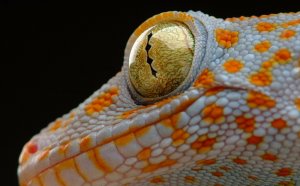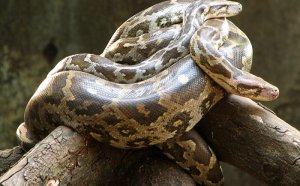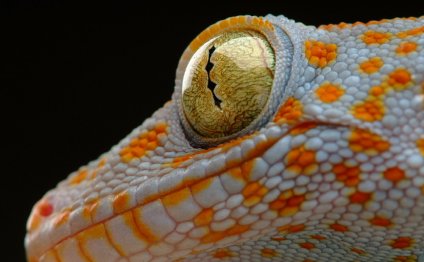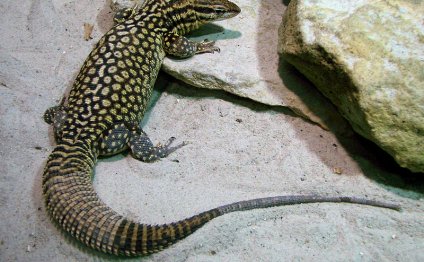
Lizard family list
| Scientific Name: | Ophisaurus compressus | ||
| Species Authority: | Cope, 1900 | ||
Common Name(s):
|
|||
| Taxonomic Notes: | Prior to 1954 (McConkey 1954), all glass lizards (including species now known as Ophisaurus attentuatus, O. compressus, and O. mimicus) were referred to as Ophisaurus ventralis. Palmer (1987) described O. mimicus as a distinct species.
Molecular data support recognition of the family Anniellidae and anguid subfamilies Gerrhonotinae and Anguinae as monophyletic groups (Macey et al. 1999). Within the Anguinae, Ophisaurus apparently is not monophyletic; among various taxonomic alternatives available to remedy the situation, Macey et al. (1999) favoured placing all members of the subfamily in a single genus (Anguis). |
||
| Red List Category & Criteria: | |||
| Year Published: | 2007 | ||
| Assessor(s): | Hammerson, G.A. | ||
| Reviewer(s): | Cox, N., Chanson, J.S. & Stuart, S.N. (Global Reptile Assessment Coordinating Team) | ||
| Justification:
Listed as Least Concern in view of its relatively wide distribution, presumed large population, and because it is unlikely to be declining fast enough (even in its inland populations) to qualify for listing in a more threatened category. |
|||
| Range Description: | This species is endemic to the southeastern United States. It inhabits sandy coastal areas and offshore islands of southeastern South Carolina, southeastern Georgia, and Florida, as well as scrub pine regions and adjacent flatwoods throughout much of peninsular Florida; most of the range is in Florida (Martoff et al. 1980, Ashton and Ashton 1985, Conant and Collins 1991, Stevenson and Crowe 1992, Enge 1994). | ||
| Countries occurrence: | |||
| Range Map: | |||
| Population: | This species is easily overlooked (Bartlett and Bartlett 1999), so there are probably many more populations than are now known. As of the late 1990s, the species was known from a few locations in South Carolina (M. Taylor pers. comm. 1998), approximately two dozen locations in about a dozen counties in Georgia (Williamson and Moulis 1994, J. Jensen pers. comm. 1998), and at least 21 counties in Florida (Ashton and Ashton 1985, Enge 1994, Stevenson and Crowe 1992). The total adult population size is uncertain but is probably at least several thousand. The species is considered rare in South Carolina (Martof et al. 1980) and very abundant on Little Saint Simmons Island, Georgia (J. Jensen pers. comm. 1998). It is locally common but apparently uncommon overall in Florida (Bartlett and Bartlett 1999). Its area of occupancy and abundance have probably undergone a long-term decline in mainland areas. J. Jensen (pers. comm. 1998) is familiar with Georgia's barrier island populations and believes these populations are probably stable; in contrast, due to loss of habitat, the mainland populations are probably declining. A similar pattern is likely in Florida. | ||
| Current Population Trend: | Decreasing | ||
| Additional data: | |||
|---|---|---|---|
| Habitat and Ecology: | Habitat includes scrub vegetation on old coastal sand dunes (where the species often can be found under tidal wrack), sand pine scrub, longleaf pine-turkey oak, coastal hammocks, and dry pine flatwoods inland (Holman 1971, Ashton and Ashton 1985, Bartlett and Bartlett 1999). The species is most often encountered crossing roads in late afternoon or at dusk (Bartlett and Bartlett 1999). Eggs are laid probably in an underground nest. | ||
| Systems: | Terrestrial | ||
| Major Threat(s): | The main threat is habitat loss (J. Blanchard and J. Jensen pers. comms. 1998). In Georgia, mainland populations are threatened by habitat loss due to fire suppression and silvicultural practices. J. Jensen (pers. comm. 1998) stated that most island populations are protected by limited use of the islands or as part of the national seashore system. Little Saint Simmons island is a private island with only a small portion used as a resort area. The remainder of the island is avoided by people because it is occupied by a large population of diamondback rattlesnakes (J. Jensen pers. comm. 1998). | ||
Source: www.iucnredlist.org
RELATED VIDEO

Antena 3 Live | TV Online Romania

Ball Python For Sale- 2011 Female Pastel ~ Robert Rose ...
![[LIVE] Black Desert Online - Gameplay ITA - Proviamolo per](/img/video/live_black_desert_online_gameplay.jpg)
[LIVE] Black Desert Online - Gameplay ITA - Proviamolo per ...
Share this Post
Related posts
Colorful lizard
DECEMBER 13, 2025
A very large species of chameleon that is endemic to forests in eastern and northern Madagascar. They reach up to 68 cm (27…
Read MoreWhere can I buy a Snake?
DECEMBER 13, 2025
Hair in the drain This product did a great job of removing hair that was slowing down my drain. This was easy to assemble…
Read More











